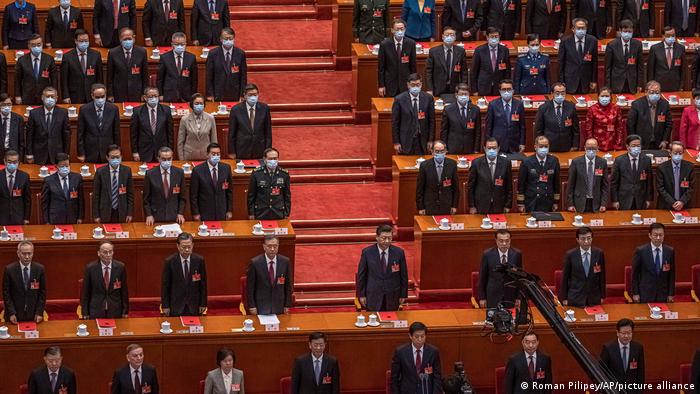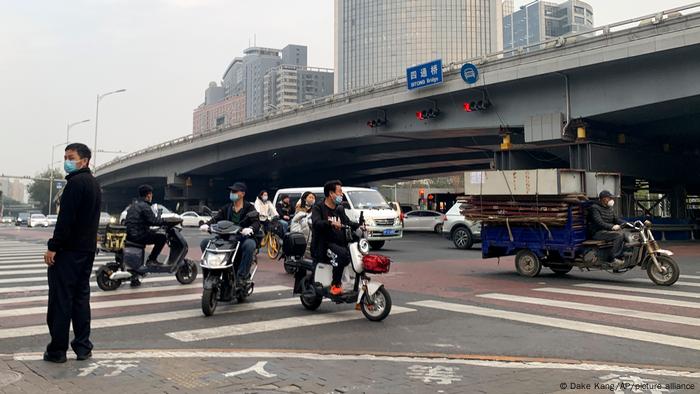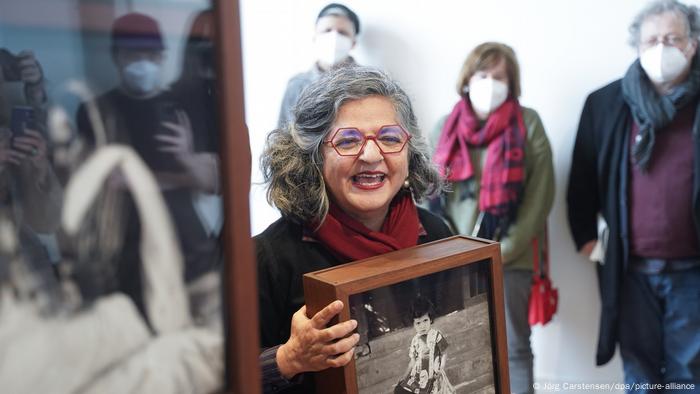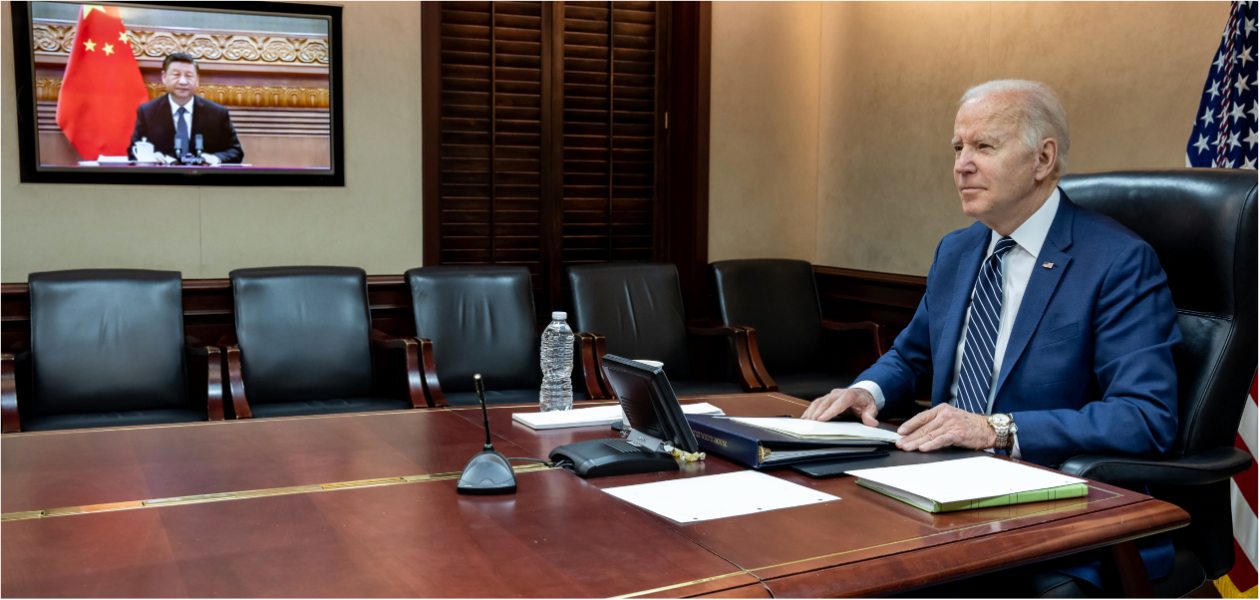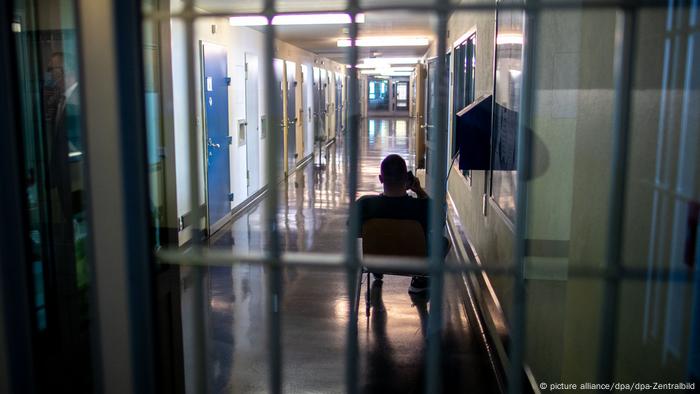Young Nigerians, who say they have grown tired of older politicians, are mobilizing behind a candidate they consider more youthful and who promises real solutions to their problems. DW takes a closer look at Peter Obi.

Peter Obi is challenging the long dominance of Nigeria's ruling APC and main opposition PDP
The presidential election campaign in Nigeria has been in full swing since the Independent National Electoral Commission (INEC) revealed its timetable last month.
Eighteen presidential hopefuls — including one woman — are in the running to lead Africa's most populous nation. Nigeria will head to the polls to pick its next president on February 25, 2023.
Who are the main candidates?
According to some analysts, the three leading contenders to succeed Nigerian President Muhammadu Buhari are Ahmed Tinubu (70), a former governor of Lagos state and the candidate of the governing All Progressive Congress (APC), Atiku Abubakar (75), a former vice president who is running for the opposition Peoples Democratic Party's (PDP), and the Labour Party's (LP) candidate Peter Obi.
At 61, Peter Obi is the youngest of the three and currently the most popular. Young Nigerians are calling for a new era and seem poised to demonstrate that, with 71% of those who completed their voter registration aged between 18 and 34, according to Nigeria's Independent National Electoral Commission (INEC).
A recent poll conducted by Bloomberg revealed that 72% of "decided voters'' said they would support Peter Obi in the elections.
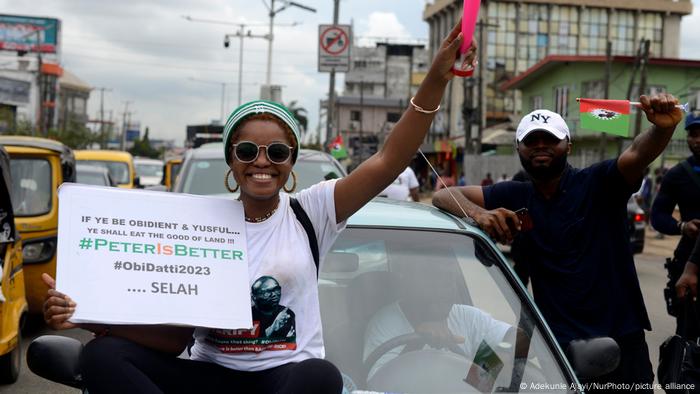
Obi's supporters who call themselves 'Obidients' say he offers an alternative to the 'old-guard' candidates
Who is Peter Obi?
Obi is a businessman and former governor, who ran for vice president in the last election.
He is known for his frugal spending, transforming the educational and business sectors during his stint as state governor, and his open and accessible leadership style.
However, his Labour Party does not have such a great reach across Nigeria's 36 states — despite the frenzy surrounding his campaign so far.
The 'Obidient' movement
DW spoke with Anthony Abakporo, a street pastor, who has for some time now focused his preaching on Obi out of desperation for a change in Nigeria.
"Things are very bad," he said. "The roads […] schools are not good as we speak right now. Everything that has to do with the welfare of humanity is bad."
Abakporo said he was willing to join other young people in an effort to support Obi. "We are going to put in our resources, we're going to put in our money, we're going to put in our time to ensure that he gets there for the new Nigeria. We can't continue like this," he said.
Peter Obi's support base is now so strong across the country that it has now been termed a movement.
The "Obidient" movement, as it has been termed by many, started with young people who are considered very strong-willed, independent-minded and contemptuous of older politicians who they say have done nothing for them.
"We the youths — we're not moved by the temptation to collect bribes or money in order to forfeit our destiny again for another four years," one young person told DW.
Another young voter told DW that "anybody that can do the job that can take Nigeria forward is what we need right now."
Many analysts believe that the "Obidient" movement is a continuation of the EndSars protests of 2020 — when thousands of young people took to the streets demanding an end to the SARS police unit which was notorious for assaulting, extorting, and killing innocent people.
Just like #EndSars activism, the "Obidient" movement is decentralized, community funded and has no clear leader.
It's organized by multiple small groups who have the common goal of unseating the establishment. Using Obi as a channel to air their hopes and vent their anger, young people have been campaigning online and holding peace walks across Nigeria.
In a report, the civil society group Centre for Democracy and Development said that money would "continue to play a huge role in determining who emerges the winner if the presidential primaries and recent gubernatorial elections offer any lesson."
"Online campaigns will be more fiercely fought than ever, with attacks aimed at boosting candidates, attacking opponents and undermining INEC likely to be accentuated in social media in the run-up to, during and even after voting," the report noted.
A statement from the youth
Around 95 million voters are expected to participate in the February election, according to INEC's projections.
Security and the economy are major issues for the more than 200 million citizens of Nigeria.
The West African nation is also battling an insurgency by Islamic extremists in the northeast, as well as armed violence that is spreading across parts of the northwestern and southeastern regions.
Preacher Anthony Abakporo said he considers the enthusiasm around Peter Obi as a statement from the Nigerian youth that they want real solutions to their problems.
"We are tired. Since we were born, we've never seen anything work. So, we feel like it has been their turn all along, they've done their own, it's Nigeria's turn. It's not Igbo, it's not Yoruba, it's not Hausa ... it's beyond the tribe," he said.
Young people like Abakporo are ditching the two strongest parties in the country and rallying behind Peter Obi but some critics say that Obi's following is only an internet movement that will not translate to votes in 2023.
However, it's clear that his support has already transcended beyond social media. With the "Obidient" movement on the rise many believe the old political guard could be in for a rude awakening.
Edited by: Keith Walker
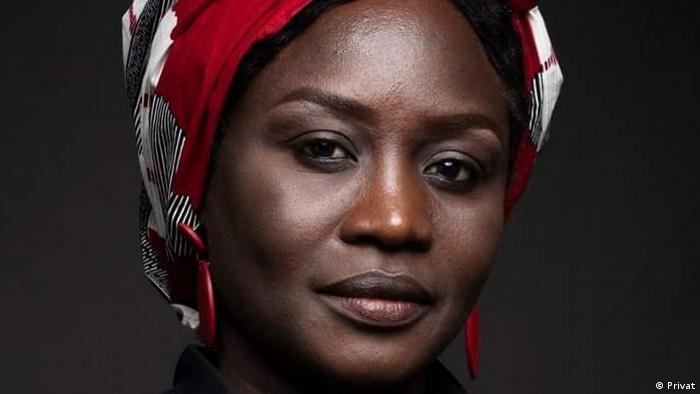
'ART IS A SOFT POWER'
Stella Gaitano
Born in Sudan in 1979, the author writes mainly about war, escape and displacement, but also about great expectations and hopes for her native country. In early 2022, she fled to Germany with the help of the PEN writers' association. Art is a living thing that needs space to be freely expressed, accepted and supported, Gaitano says.
12345
AUDIOS AND VIDEOS ON THE TOPIC
'The Obidients' call for change in Nigeria
The Escape Diaries: Collins Xavier
